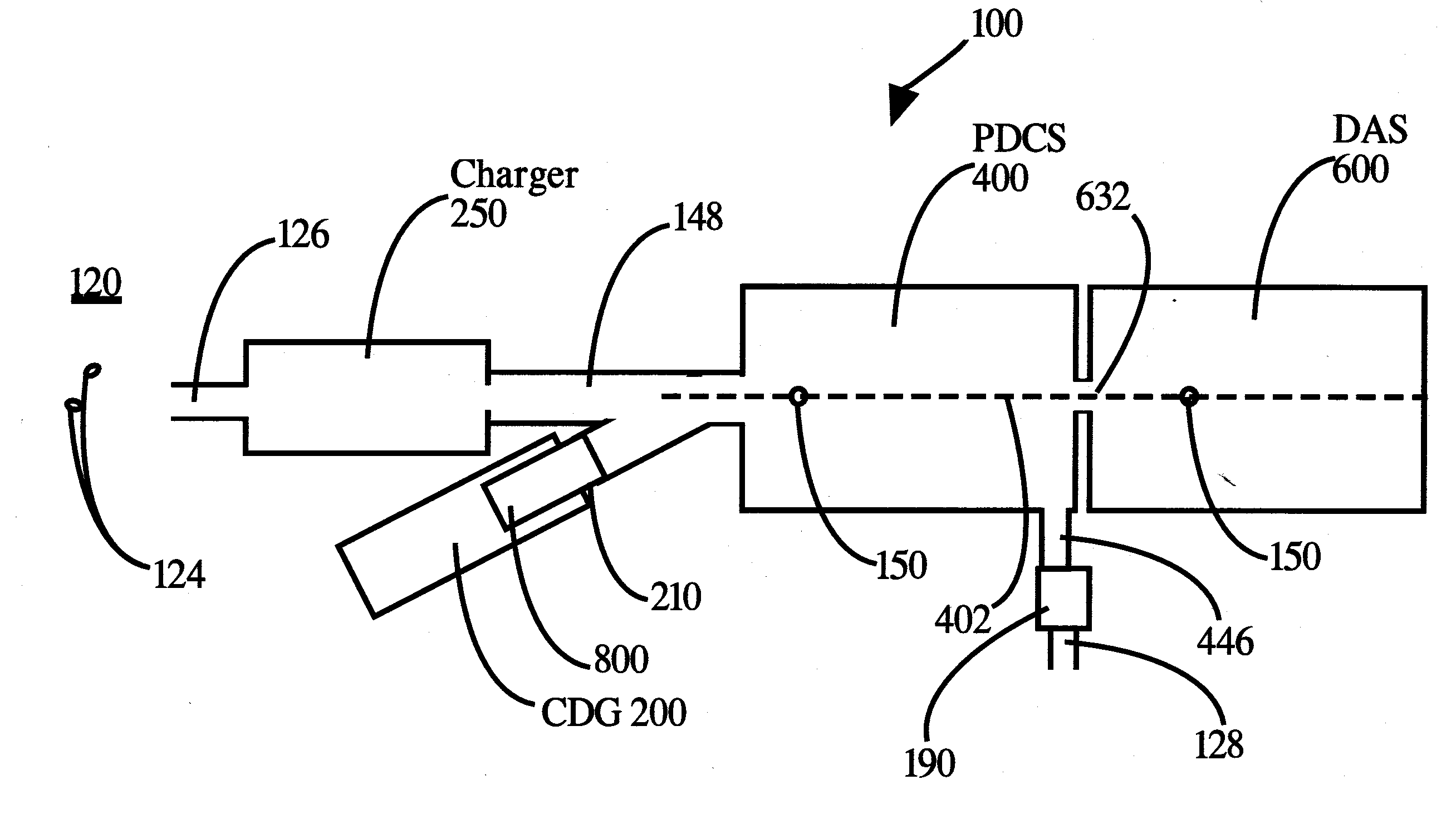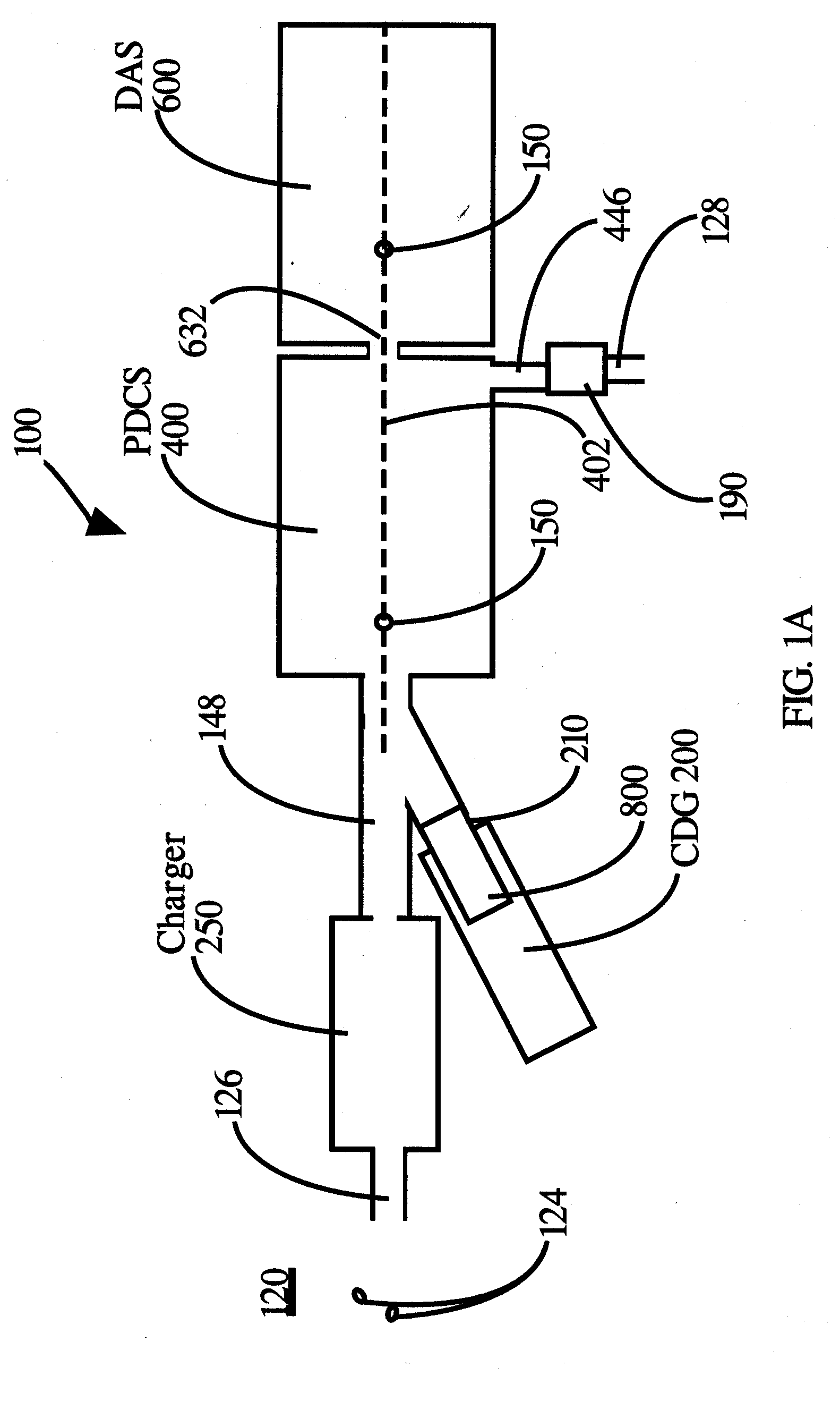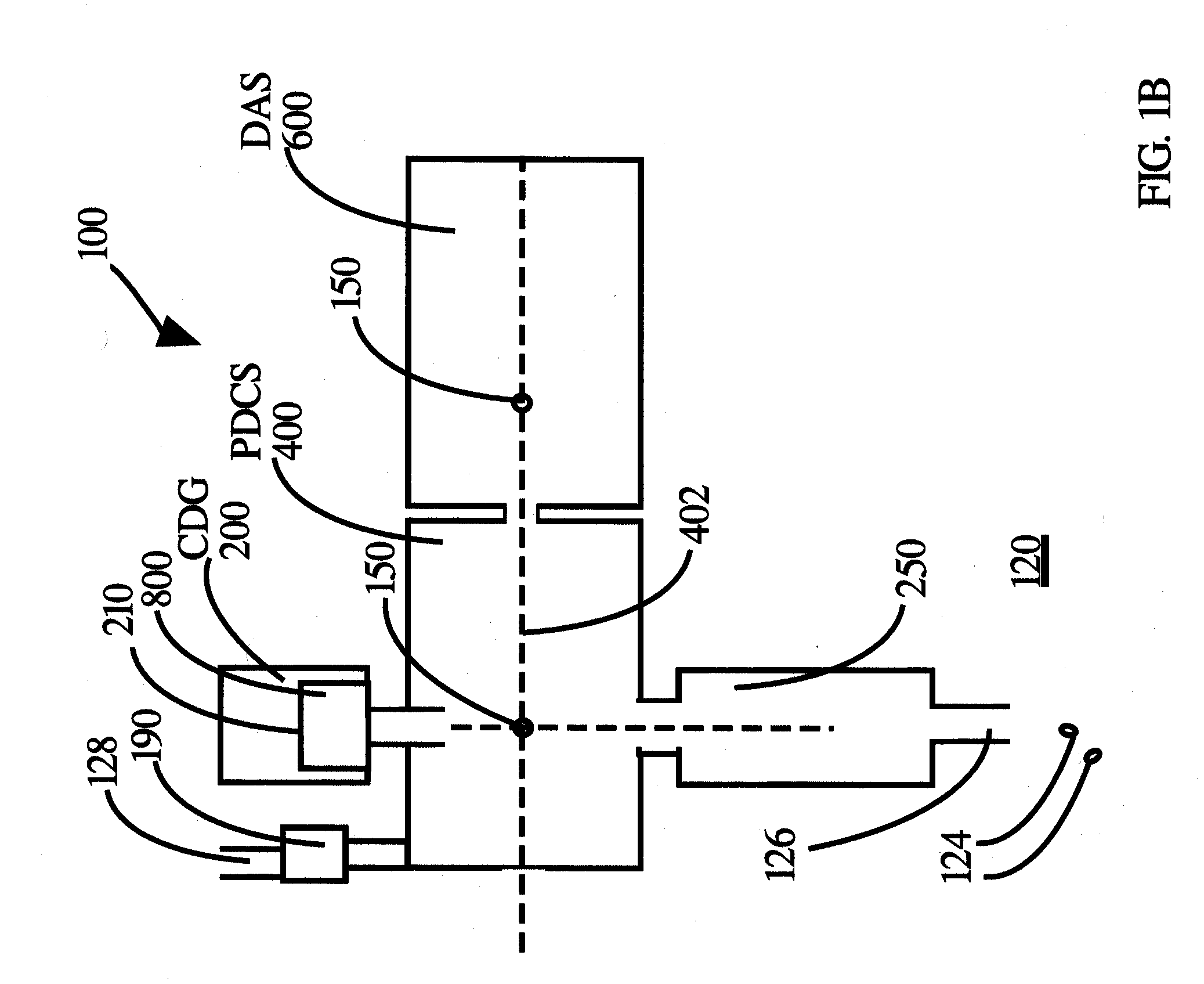Aerosol Particle Analyzer for Measuring the Amount of Analyte in Airborne Particles
an airborne particle and analyte technology, applied in the field of chemical analytical and immunological testing, can solve the problems of difficult to imagine, large number of possible approaches, and insufficient satisfaction of objectives of none of these methods
- Summary
- Abstract
- Description
- Claims
- Application Information
AI Technical Summary
Benefits of technology
Problems solved by technology
Method used
Image
Examples
Embodiment Construction
[0046] Referring to FIG. 1 an aerosol particle analyzer (APA) 100 is immersed in a gas such as the atmosphere, having particles therein. Generally, the particles include many types of particles 124, some of which may contain no analyte 80, and some of which may contain some amount of the analyte 80. The particles 124 may be liquid, solid, or a mixture of liquid and solid.
[0047] An analysis liquid 800 is in a reservoir 210 in the droplet generator 200. The analysis liquid 800 is chosen to have the following property: when the analysis liquid 800 is mixed with particles 124, the fluorescence of the analysis liquid 800 varies according to the amount of the analyte 80 in the particles 124, so that the amount of analyte can be determined from measurements of the fluorescence. No wash steps or separation is allowed, that is, the analysis liquid 800 used in this present invention must be suitable for a homogeneous assay.
[0048] The measurement of the analyte 80 in the particles 124 is acc...
PUM
| Property | Measurement | Unit |
|---|---|---|
| optical property | aaaaa | aaaaa |
| electrical charge | aaaaa | aaaaa |
| charge | aaaaa | aaaaa |
Abstract
Description
Claims
Application Information
 Login to View More
Login to View More - R&D
- Intellectual Property
- Life Sciences
- Materials
- Tech Scout
- Unparalleled Data Quality
- Higher Quality Content
- 60% Fewer Hallucinations
Browse by: Latest US Patents, China's latest patents, Technical Efficacy Thesaurus, Application Domain, Technology Topic, Popular Technical Reports.
© 2025 PatSnap. All rights reserved.Legal|Privacy policy|Modern Slavery Act Transparency Statement|Sitemap|About US| Contact US: help@patsnap.com



